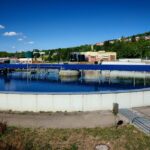Sewage treatment is a critical process that ensures wastewater is cleaned before it returns to the environment. Without proper treatment, sewage can contaminate water sources, harm wildlife, and pose serious health risks to humans. Understanding how sewage treatment works helps us appreciate the technology and effort involved in keeping our water clean and safe.
The Stages of Sewage Treatment
Sewage treatment typically involves three main stages: primary, secondary, and tertiary treatment. In the primary stage, solid waste and large particles are removed from the wastewater. This is done using screens and sedimentation tanks, where the heavier solids settle to the bottom. By removing these solids early on, the treatment process becomes more efficient and reduces the risk of blockages.
Secondary treatment is the biological stage, where microorganisms are used to break down organic matter. Bacteria naturally consume the waste, converting it into safer by-products. This process is highly effective in removing dissolved and suspended organic material, which is often the main source of pollution in untreated sewage.
Tertiary treatment is the final stage, which involves advanced processes to further purify the water. This stage may include filtration, chemical treatment, and disinfection using chlorine or ultraviolet light. Tertiary treatment helps remove any remaining contaminants, making the water safe enough to be released back into rivers, lakes, or used for irrigation.
The Importance of Sewage Treatment
Sewage treatment plays a crucial role in protecting public health and the environment. Untreated sewage can carry harmful bacteria, viruses, and parasites that can cause serious diseases. By treating wastewater, we reduce the risk of outbreaks and ensure that the water entering our natural ecosystems is clean and safe for wildlife.
In addition to health benefits, sewage treatment also helps preserve our water resources. By removing pollutants, treated water can be safely returned to rivers and lakes, helping to maintain the balance of the ecosystem. In some cases, treated wastewater can even be reused for agricultural irrigation or industrial processes, conserving valuable freshwater supplies.
Challenges in Sewage Treatment
Despite its importance, sewage treatment faces several challenges. One major issue is the growing volume of wastewater generated by urban areas. With increasing populations, sewage treatment plants are under pressure to handle larger amounts of waste. Additionally, modern sewage contains a variety of chemicals, pharmaceuticals, and microplastics that are difficult to remove using traditional methods.
To address these challenges, new technologies and innovations are being developed to improve the efficiency of sewage treatment. Advanced filtration systems, biological reactors, and renewable energy sources are being integrated into modern plants to handle complex waste and reduce environmental impacts.
Understanding how sewage treatment works helps us appreciate the efforts made to keep our water clean. By supporting wastewater management initiatives and using water wisely, we can all contribute to a healthier environment.



